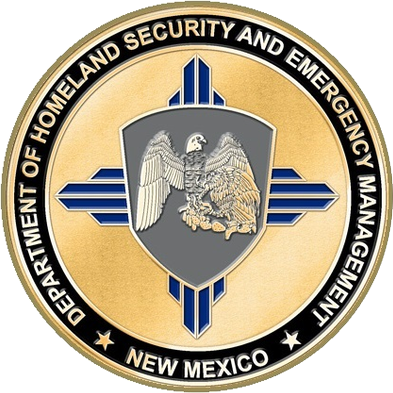Hazard Mitigation Grant Program (HMGP)
What is HMGP?
The Hazard Mitigation Grant Program is funding requested by the Governor of the State or Tribe during a Presidential Disaster Declaration. HMGP is authorized under the Stafford Act, Section 404. Each state determines how these funds are prioritized with a Hazard Mitigation Administrative Plan. In New Mexico, HMGP funds can be used to create hazard mitigation plans, conduct outreach and education, or construct mitigation projects associated with any identified natural hazard, and any eligible applicant throughout the state can apply. The key purpose of this grant program is to enact mitigation measures that reduce the risk of loss of life and property from future disasters. Please direct any questions regarding HMGP in New Mexico to the DHSEM Mitigation Unit at DHSEM.Mitigation@state.nm.us
HMGP under Section 404 Mitigation is distinct from Section 406 Mitigation, which is administrated by the Public Assistance Program. 406 Mitigation funding is limited to protecting facilities damaged by the disaster event from future, similar disaster events. Please direct any questions regarding 406 Mitigation to the Response and Recovery Unit.
HMA Funding Announcement Webinar September 9, 2021
HMA Application Development Webinar October 7, 2021 – Part 1
HMA Application Development Webinar October 7, 2021 – Part 2
What are “natural hazards”?
A natural hazard is a natural phenomenon that might have a negative effect on humans or the environment. A few New Mexico specific examples include flash flooding, wildfires, droughts, thunderstorms, and earthquakes. There are 14 natural hazards identified in the State’s Hazard Mitigation Plan. These hazards are distinct from human-caused hazards, which are not eligible for natural hazard mitigation funding.
What can I do with this grant?
The following represents some of the project types eligible for award under HMGP. Please direct any questions regarding HMGP eligibility to the DHSEM Mitigation Unit at DHSEM.Mitigation@state.nm.us.
- Local, tribal, or multi-jurisdictional hazard mitigation plan
- Risk assessments associated with a hazard mitigation plan or plan update
- Stream work, bank stabilization, erosion control
- Green infrastructure
- Flood risk reduction – stormwater management, drainage, and channelization
- Wildfire mitigation – thinning, defensible space, retrofit of non-combustible materials
- Generators for critical facilities
- Emergency communication and warning systems
- Debris flow/landslide barriers
- Outreach/community education campaigns
- Phased projects – two-part project awards for 1) design, environmental clearance, cost-benefit analysis, etc., and 2) awards for project implementation.
Check out FEMA’s website for more information here.
Who can apply?
Applications are submitted to the DHSEM Mitigation Unit, which administers the HMGP grant funds awarded by FEMA. Local and municipal governments, tribal nations, state agencies, quasi-governmental agencies, and non-profit organizations can apply for sub-grants. Individuals and businesses may not apply directly for HMGP funding but may be sponsored through an appropriate sub-applicant.
FEMA requires state, territorial, tribal, and local governments to develop and adopt hazard mitigation plans as a condition for receiving HMGP project funding. Mitigation plans play a critical role in breaking the cycle of disaster, damage, reconstruction, and repeated damage. With these plans, communities can identify risks and vulnerabilities related to natural disasters in their communities, and they can develop long-term strategies to protect people and property from future disasters. Hazard mitigation plans must be updated and receive FEMA approval every five years.
How much money is available?
HMGP is only available following a Presidential Disaster Declaration in which the state requests HMGP funding. The amount awarded to HMGP is a small percentage of the disaster assistance provided under the Public Assistance Program. HMGP funding is broken into three categories: cost-effective projects, non-cost-effective projects, and planning activities.
The majority of HMGP funds are typically directed to projects where the projected benefits of the project outweigh the likely costs. For more information, see FEMA’s Benefit-Cost Analysis tool.
5% of the total award amount is limited to projects that cannot prove they are cost effective, like outreach programs, warning sirens, or, in some cases, generators. Typically, these applications request far more funding than what is available, resulting in a competitive selection process.
7% of funding is limited to planning activities. Planning sub-applications help states, territories, tribal nations, and local governments engage in a planning process that meets the requirements outlined in the Title 44 Code of Federal Regulations, Part 201 Mitigation Planning. Most planning applications result in a mitigation plan adopted by the jurisdiction(s) and approved by FEMA. However, planning funds have also been used to conduct risk assessments and collect data for use in the planning process.
What are the cost-share requirements?
FEMA provides up to 75% of the funds for mitigation projects. The remaining 25% can come from a variety of sources. Most sub-grants in New Mexico are matched with in-kind time. Staff who are not federally funded track the time they spend working on the project or administering the sub-grant, and they count their regular salary rate toward the 25% requirement. Cash match (payment from the state, local governments, or individuals), is also common. Other funding sources may include donated resources, such as construction labor, Increased Cost of Compliance (ICC) funds from a flood insurance policy, or loans from other government agencies, such as the Small Business Administration.
An additional 5% of the total project cost is available at 100% federal share for management of each sub-grant. Management costs are eligible and reasonable indirect costs, direct administrative costs, and other administrative expenses associated with a mitigation project.

